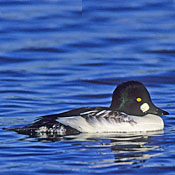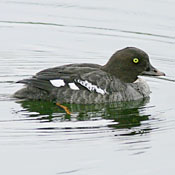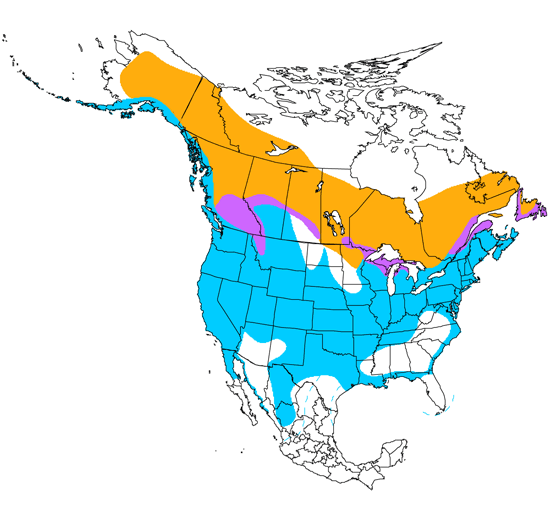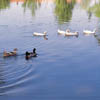Common Goldeneye
Bucephala clangula

Duck Like

Length: 19 in. (47 cm )
In the winter this noisy duck gathers in small to large flocks on deep rivers, open lakes and coastal bays where they dive for crustaceans, molluscs, insects, fish and aquatic vegetation. In flight they produce a distinctive metallic whistling noise with their wings. During the summer they move to higher elevation forested ponds where they nest high in tree cavities lined with wood chips and feathers.
The four-digit banding code is COGO.
Bibliographic details:
- Article: Common Goldeneye
- Author(s): Dr. Biology
- Publisher: Arizona State University School of Life Sciences Ask A Biologist
- Site name: ASU - Ask A Biologist
- Date published:
- Date accessed:
- Link: https://askabiologist.asu.edu/activities/bird/common-goldeneye
APA Style
Dr. Biology. (). Common Goldeneye. ASU - Ask A Biologist. Retrieved from https://askabiologist.asu.edu/activities/bird/common-goldeneye
Chicago Manual of Style
Dr. Biology. "Common Goldeneye". ASU - Ask A Biologist. . https://askabiologist.asu.edu/activities/bird/common-goldeneye
Dr. Biology. "Common Goldeneye". ASU - Ask A Biologist. . ASU - Ask A Biologist, Web. https://askabiologist.asu.edu/activities/bird/common-goldeneye
MLA 2017 Style
Be Part of
Ask A Biologist
By volunteering, or simply sending us feedback on the site. Scientists, teachers, writers, illustrators, and translators are all important to the program. If you are interested in helping with the website we have a Volunteers page to get the process started.





